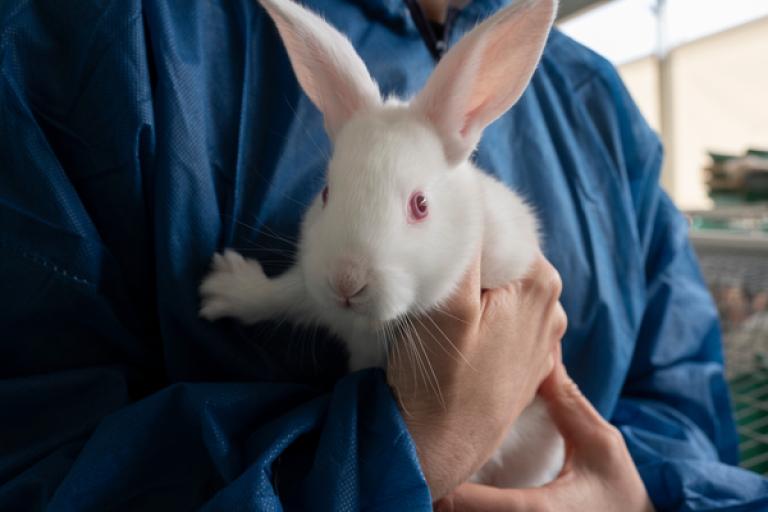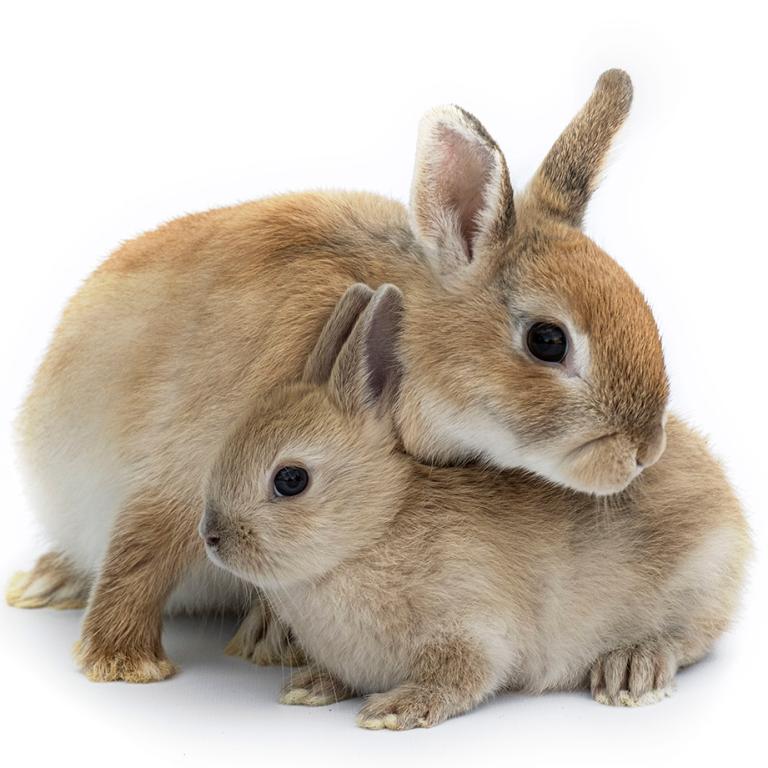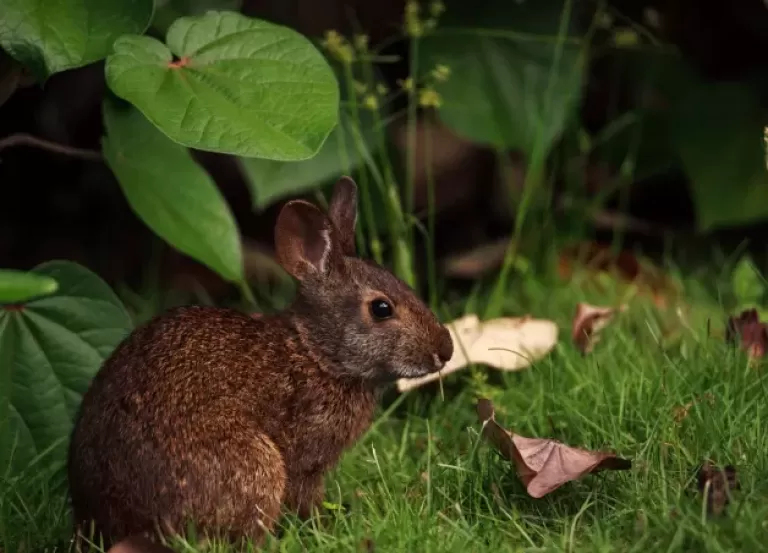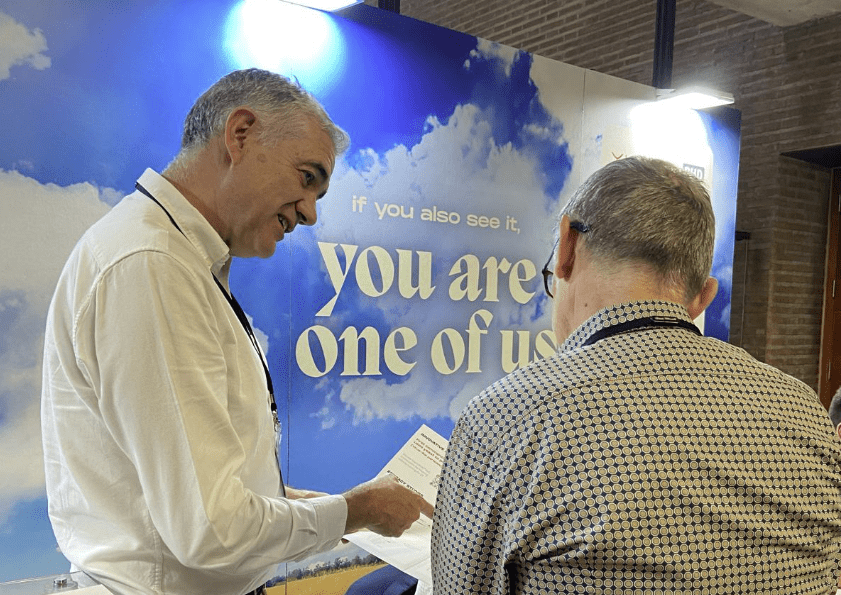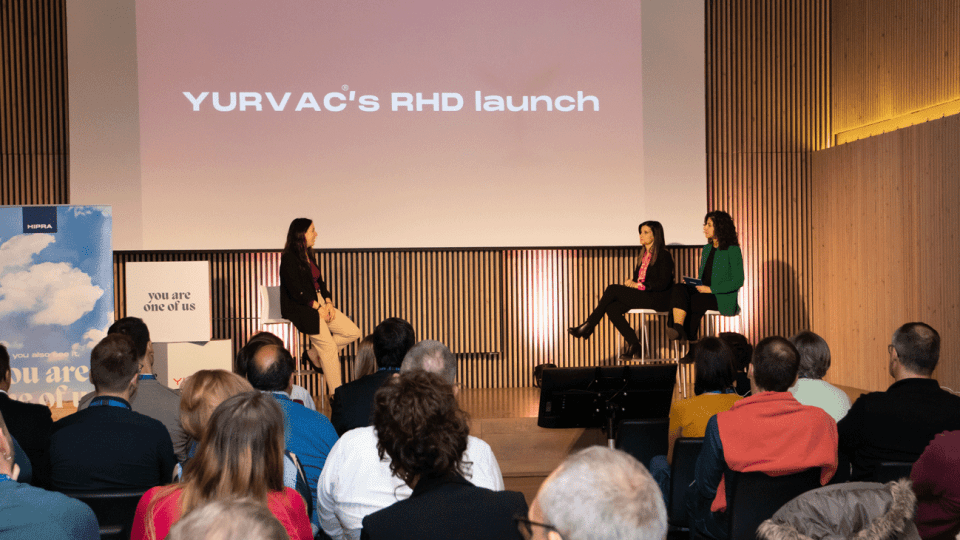AETIOLOGY:
Myxomatosis is caused by the Myxoma virus (MYXV), belonging to the Poxviridae family. It is a large linear double stranded DNA virus antigenically related to the Shope fibroma virus. Different virulence grades have been described, from grade I to grade V.
TRANSMISSION:
- Direct contact: ocular and nasal secretions, skin lesions, semen and genital secretions.
- Indirect contact: biting insects (mainly mosquitoes and fleas), needles, instruments used for artificial insemination and other fomites.
CLINICAL SIGNS:
Two different forms have been described:
- Classical or nodular form: this usually occurs when the MYXV has been transmitted by biting insects. Oedema (eyelids, head – “big head disease” – perianal region, etc.), and nodules or myxomas in distal parts of the body (ears, muzzle, eyelids, etc.) and anogenital region are the most common clinical signs. Secondary bacterial infections in the respiratory tract are common in this form.
- Amyxomatous, atypical myxomatosis or respiratory form: this is reported with contact transmission without the involvement of insects. Respiratory and ocular signs such as dyspnoea, swollen eyelids and blepharoconjunctivitis, and perineal oedema are typically observed. Small myxomas may also be observed.
LESIONS:
- Classical or nodular form: myxomas and blepharoconjunctivitis.
- Amyxomatous or respiratory form: rhinitis, blepharoconjunctivitis, bleeding in the lungs and pneumonia.
DIAGNOSIS:
- Identification of the causative agent: virus isolation, histopathology and immunostaining, electron microscopy, PCR, FAT or IPMA.
- Detection of immune response (serology): ELISA, IFAT or AGID.
TREATMENT, PREVENTION AND CONTROL:
There is no specific treatment for myxomatosis, therefore prevention is essential in order to avoid the disease.
Biosecurity measures such as insect control or cleaning and disinfection of all equipment should be applied. Vaccination is a key tool for its prevention. There are homologous live attenuated vaccines (the antigen is an attenuated myxomatosis virus) and heterologous live attenuated vaccines (the antigen is an attenuated Shope fibroma virus). Which vaccine is recommended will depend on the particular situation.






